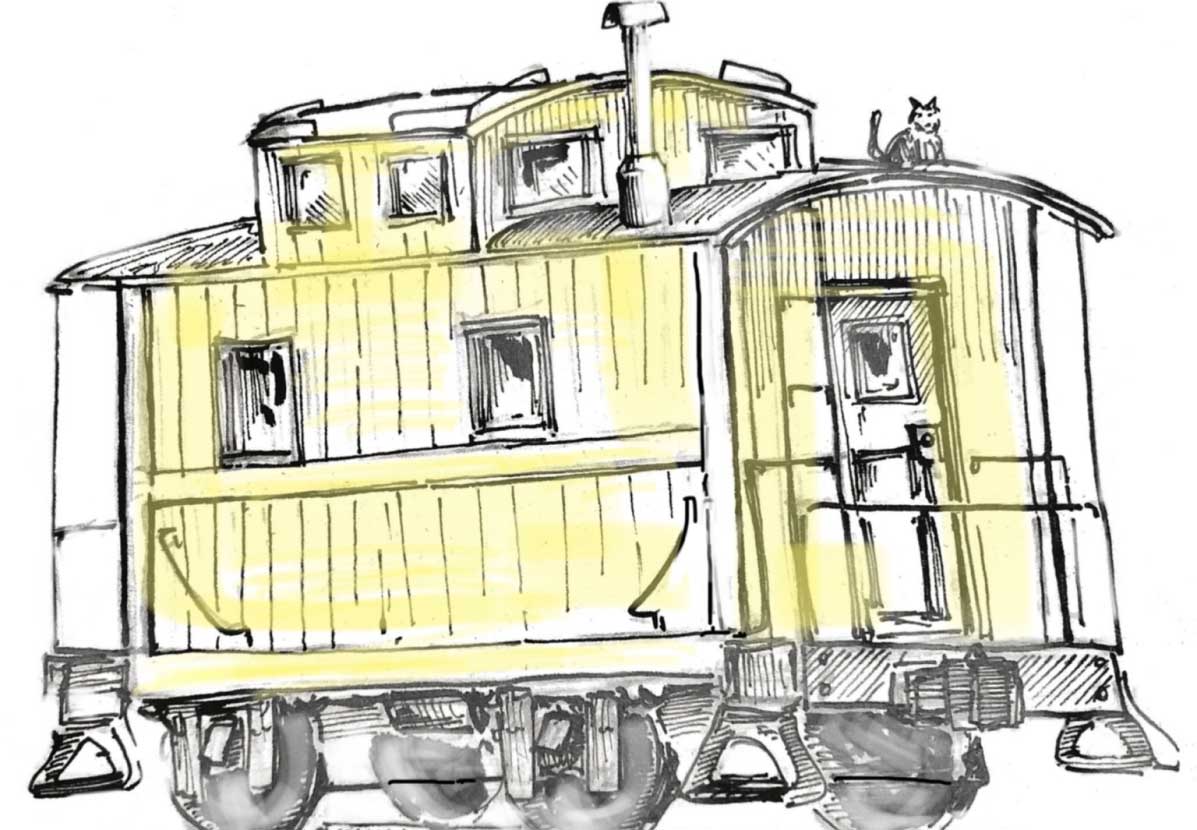Nevada Northern/N.C.C.Co. Caboose #15
Exhibit Code
#CABOOSE15

Description
The caboose is an enduring symbol of American Railroading. They were a place for the rear-end crew to ride, keeping an eye on the train and holding spare parts for running repairs. In the 1980’s, lineside detectors and end-of-train devices made the caboose obsolete, resulting in their disappearance.
In June 1907, the Nevada Northern received three 4-wheeled all-wood cabooses from the Mt, Vernon Car Co., #10, #12, and #13. These small cabooses had no trucks, rather the two wheelsets were attached straight to the frame of the car. Cabooses of this type were generally referred to as “bobbers” due to their bobbing motion traveling down the track.
Upon their arrival, #13 was quickly renumbered #11. While early service isn’t precisely known, considering later assignments these small cabooses were likely used in ore train service.
In December 1911, caboose #12 caught fire at Copper Flat, destroying it. As it was insured, the Nevada Northern shops “rebuilt” #12, turning it out with a steel underframe rather than wood. This led to the NN shops building an identical caboose to #12 in 1913, assigning it #9. Finally, in 1917 the railroad built two more steel-framed 4-wheel cabooses, #14 & #15. #10 and #11 remained wooden-framed cabooses all their lives.
In 1920, the federal government issued the Esch-Cummings Act. This returned control of US Railroads back to private ownership following the end of World War I. As part of the act, the Interstate Commerce Commission was authorized to collect any net operating income over 6% from railroads to put into a national fund to benefit all railroads.
To avoid this, The Nevada Northern sold equipment used in ore service to Nevada Consolidated Copper Company to remove it from interstate service. This included the 90-class locomotives, ore cars, and 4-wheeled cabooses. Equipment was then lettered N.C.C.Co. for the new owner.
The six 4-wheeled cabooses continued to serve in ore train service through to the 1940’s. At some time in the late 1930’s, at least #9, #12, and #15 received X-bracing to their bodies underneath the cupola. In 1944, Kennecott fully absorbed Nevada Con operations, and the cabooses were re-lettered to K.C.C. (some had been previously re-lettered N.C.C.C. during Kennecott’s ownership of Nevada Con).
By 1955, the fleet of cabooses were approaching 50 years of age. Kennecott had four 8-wheeled steel cabooses (#22-25) built for ore service on the Nevada Mines Division, and subsequently retired the wooden cabooses. The Nevada Northern sold off the bodies to Kennecott employees for $25 ($286 in 2024).
Today, two are preserved at museums. #15 is believed to be the one here at the Nevada Northern Railway Museum, resting on a pair of mill flats. Long-term plans call for the restoration of the caboose. Many staff refer to this as “Dirt’s Caboose” due to museum celebrity “Dirt” often living in this caboose during the summer when it rested in the Boiler Shop. #12 is believed to be the one on display at the White Pine Public Museum. For many years, it sat on a pair of wheels. More recently, a frame was built for the car, upon which it now sits.
One is privately owned, and was on display near the US-93 crossing for many years. When the construction of the Holiday Inn Express & Suites started, the caboose was moved to a private ranch. Another caboose was found by one of our crews still being used as a hunting cabin.
Historical Archive
You can find more information about this article in our Historical Archive hosted on Luma Imaging.
Specifications
Builder: Nevada Northern Railway
Built: 1917
Type: Caboose
Weight: 19,840 lbs. (9.92 tons)
Can’t get enough of our Rich History?
If you have any questions or want to request more information for a certain train or equipment, contact us here.